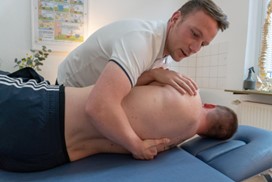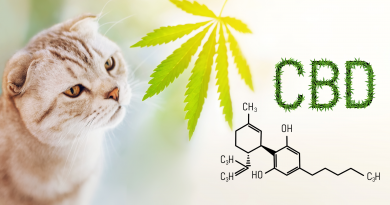Is There a Cure For Spinal Stenosis?
An estimated 250,000 to 500,000 residents of the United States suffer from spinal stenosis. This spinal disorder results from the narrowing of the spinal canal, and it can lead to a range of uncomfortable symptoms.
One of the most prevalent questions among patients with spinal stenosis is whether or not there’s a cure for the condition. In this article, we’ll explore this topic and describe the spinal stenosis treatment options available today.
Contents
What Factors Contribute to Spinal Stenosis?
Spinal stenosis can develop as a result of various factors. The most common of these factors include:
Herniated Disc
A cushiony disc is located in between each of the vertebrae of the spine. Called intervertebral discs, they absorb shock to prevent injury to the vertebrae while supporting the overall structure of the spine.
Whether due to age, overuse, or both, the tough exterior of a disc can weaken, thin out, and crack. When this occurs, the soft, jelly-like interior of the disc can jut out into the spinal canal. The damaged disc may then press on nearby spinal nerves, leading to symptoms of spinal stenosis.
Thickening Spinal Ligaments
The ligaments of the spine help hold together the vertebrae. But, over time, these ligaments can lose flexibility and thicken. In some people, thickened spinal ligaments extend into the spinal canal and trigger symptoms of spinal stenosis.
Bone Overgrowth
There are multiple causes of bone overgrowth in the spine that can lead to spinal stenosis. One possible cause of bone spurs is osteoarthritis, which is also called “wear and tear” arthritis. This condition occurs when the cartilage that protects the joints degenerates from the aging process.
As a result of osteoarthritis, smooth lumps of bone known as bone spurs may develop in the spine. Bone spurs can take up space in the spinal canal and cause spinal stenosis.
Paget’s disease is another possible cause of bone overgrowth in the spine. This is a bone disease that involves the deterioration of bone tissue.
Spinal Injury
A sudden trauma to the spine can lead to a vertebral fracture or dislocation. These spinal injuries can displace bone tissue and trigger inflammation, both of which may limit the space in the spinal canal.
Genetic Factors
Spinal stenosis can also occur if an individual is born with an abnormally small spinal canal. This is referred to as congenital spinal stenosis.
Can You Cure Spinal Stenosis?
While there’s no way to reverse this spinal disorder, laminectomy surgery can serve as a cure of spinal stenosis. A decompressive laminectomy creates more space in the spinal canal to alleviate nerve compression. However, patients must consider spine surgery recovery time before undergoing surgical spinal stenosis treatment.
What is Decompressive Laminectomy?
Laminectomy is a kind of spinal decompression surgery. It involves removing the lamina, a section of bone tissue that covers the back of the spinal canal. This process creates more space in the spine to resolve nerve compression.
In laminectomy, your surgeon may choose to remove some or all of the lamina, depending on your needs. A similar procedure called laminotomy involves removing only a small portion of the lamina. Laminotomy is commonly done to treat disc herniation.
Like any form of spinal decompression surgery, a laminectomy can destabilize the spine. To offset this risk, surgeons often perform spinal fusion along with surgical spinal decompression.
Spinal Fusion With Laminectomy
In spinal fusion, the surgeon sets bone graft material in between the vertebrae at the affected level of the spine. The bone graft is secured in place with implants such as rods, plates, and cages.
The bone graft material stimulates the fusing of the two vertebrae. Over time, they’ll turn into one bone. This eradicates all motion at the fused segment of the spine.
Spinal fusion has long been used with laminectomy in spinal stenosis surgery. However, for several reasons, people are now seeking alternatives to fusion more than ever before. These reasons include:
- Reduced back mobility
After spinal fusion, patients can never move the spine to the extent that they could before the surgery. The ability to flex, twist, and bend the spine is significantly compromised. As a result, patients may be limited as far as physical activity and even day-to-day motions, like picking up objects off of the floor.
- Adjacent segment disease
Adjacent segment disease, or ASD, is a possible complication of spinal fusion. It results from increased strain on the spinal segments above and below the fused vertebrae. This condition speeds up the degeneration of the affected segments, often causing back pain and neurological symptoms.
- Prolonged recovery period
Spinal fusion extends the recovery period for spinal stenosis surgery. For one, patients must stay in the hospital for up to four days after the fusion procedure. It may take four to six weeks before patients can get back to work (so long as the job doesn’t involve significant physical activity).
In total, the full recovery process for spinal fusion can take a year. For patients who love sports and physical activity, this year can take a toll on their quality of life.
What Are The Non-Surgical Treatment Options For Spinal Stenosis?
In most cases, surgery is the only way to reverse the narrowing of the spinal canal that occurs with spinal stenosis. However, for many patients, non-surgical treatment options can provide symptom relief and improve the overall health of the spine.
The most widely-used non-surgical treatment options for spinal stenosis include:
- Physical therapy for increased muscle strength, balance, and spinal alignment
- Pain medications for pain and inflammation management
- Epidural steroid injections for immediate relief from pain and inflammation
- Lifestyle changes to support the body’s healing process and prevent re-injury
- Alternative treatments including chiropractic care, acupuncture, massage therapy, and electrostimulation
There may not be an easy cure for spinal stenosis. But, patients can rest assured that there are numerous, effective treatment options to alleviate spinal stenosis symptoms.





